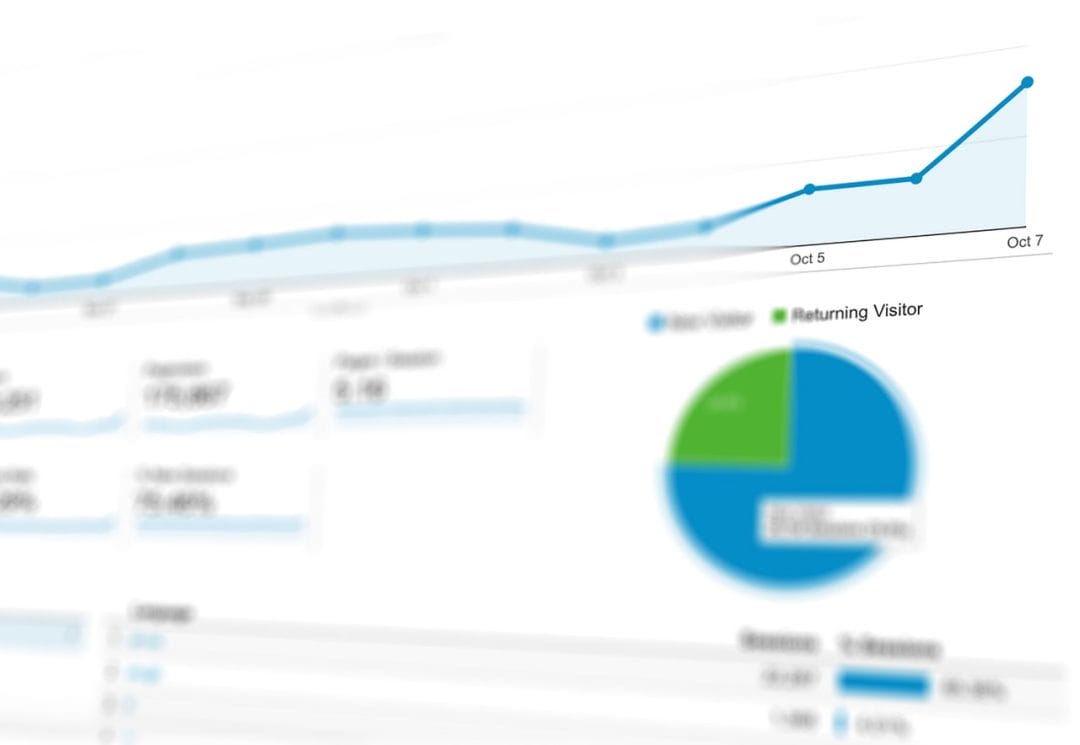You’ve most likely heard it all before, but content marketing is kind of a big deal. But, if you’re investing in content, you should be measuring your efforts – and unfortunately we come across a lot of brands that aren’t even close to understanding the value of their content.
Content can’t be measured simply. It is too diverse a medium to simplify with just one metric of measurement such as sales, or engagement. In this piece, we’ll examine the key metrics that you can study, and analyse their advantages and disadvantages in terms of measuring your content marketing efforts.
Downloads
Why to measure downloads: downloads are a simple metric to measure, and do give a feel for the level of interest in your content.
Of course, this will rely on you having downloads available, and the importance of this as a metric will depend on your exact strategy. If you’re trying to capture data through the downloads of reports and white papers, then downloads is a highly important metric. If you’re simply looking to have a highly engaged blog or news section, then downloads may be of less use.
How to measure downloads: it’ll depend exactly how you’re set up ,but the easiest way to track downloads is by setting each download up as a goal within Google Analytics.
This will allow you to report on each download in terms of where that users has come from and their interaction with your content afterwards. If you use an automation platform like Hubspot or InfusionSoft this is also quite simple to do.


Subscriptions
Why to measure subscriptions: subscriptions to your newsletter are a good metric for content marketing measurement.
If someone is signing up to your newsletter after viewing your content, then they most likely enjoyed what you had to say, found you relevant to their needs, and want to know more about you. This is a great form of interaction as it gives you a user who will see a lot of your content going forward. Subscriptions have no negative side generally, so counting raw subscriptions is a strong way of getting an indication of performance.
How to measure subscriptions: measuring subscriptions can again be pretty straight forward. If you use MailChimp or a similar platform you can get reports on who has signed up each month, or alternatively you can set your newsletter sign up form up as a Google Analytics goal and track performance that way.
Traffic
Why to measure traffic: in many ways, traffic is the ultimate vanity metric. It really doesn’t matter how many viewers and views you have if they’re not doing anything and are not enjoying your content. However, traffic is still one of the most commonly measured metrics around content marketing. Whilst basic, it does give a general popularity feel, and if you’re mainly writing for the purpose of capturing long tail keyword traffic it can show that your plans are working from that respect. However, never use in isolation as non-converting traffic isn’t particularly useful.
How to measure traffic: this one is the easiest of them all to measure, which is most likely why it’s one of the most common to track. Simply use Google Analytics or any other web analytics provider and you’ll have everything you need.


Engagement
Why to measure engagement: engagement covers both social interactions and comments on your blogs.
Both are important metrics to consider when trying to value your content marketing. Naturally, a high level of engagement in terms of comments and social interactions suggests a high level of relevance of your content, and audience participation. One caveat is that this engagement isn’t always positive, so it’s important to consider sentiment alongside volume of engagement to make sure you’re content isn’t getting of comments, but that they’re all very negative.
How to measure engagement: In terms of the volume of social interactions, there’s a number of great tools online such as Like Explorer, or you can track your engagements in your social scheduling/publishing tool such as Hootsuite. On the comments side, it’ll depend how you’re set up – if you use WordPress comments then they’re dashboard allows you to see the number of comments, whereas we use Disqus which has better capabilities for this.
Sentiment
Why to measure sentiment: when you measure engagement you should also measure sentiment. The two metrics need to go hand in hand in order to get a rounded view of how people are interacting with your content. Without sentiment, engagement volume could be irrelevant as it may be all negative, and without engagement volume, sentiment can be based on too low a number of people to be relevant.
How to measure sentiment: there are a number of sentiment measurement tools out there, from enterprise options like Radian6, through to simpler tools like Social Mention. The issue with sentiment analysis is that there is always a degree of inaccuracy due to sarcasm, and how people discuss online – however these tools will give you an important feel for the discussion.


Bounce Rate
Why to measure bounce rate: bounce rate is a simple metric that shows you the percentage of users who bounce straight off your website upon arrival. Tracking this by post or post category will give you an indication of your audience relevance. Ideally if you measure this you’re looking to decrease your bounce rate over time in order to show that the audience finding your content is more engaged in it each time and reading through your content.
How to measure bounce rate: bounce rate is another simple one to measure, again simply use Google Analytics and view bounce rate by your pages under the Behavior tab.
Time Spent on Site
Why to measure time spent on site: time spent on site is a simple metric that averages out how long each user has spent browsing your website. What’s better is viewing time spent per page, as this allows you to ascertain the average reading time of each piece of content. There are a number of things to look for here that can allow you to determine the complexity of your content.
The average adult reads around 200 words per minute, so if you divide your word count by this average (and multiply any decimals in the result by 0.60) to get seconds then you’ll know how long it should take the average person to read each piece of content. If your time on page is much higher than this it may suggest your content is a struggle for people as it’s written in too complex a manner.
How to measure time on site: this metric is in Google Analytics. Ignore the top level time on site figure, dive into your page content under the behaviour tab and pull out your time on page per post to find out how each piece of content is performing.


Reach
Why to measure content reach: the reach of your content is important in terms of defining how many eyeballs you’ve managed to get. This is similar to traffic in some ways, as reach alone may not be valuable reach. However, reach is important to measure if you’re advertising your content through social media or ad platforms like Outbrain.
How to measure reach: Measuring reach is relatively straight forward, with the ad platform that you use providing the stats that you need to see in terms of impressions served and people reached.
Sales
Why to measure sales: sales are the holy grail of content – but more often than not you’re not directly targeting sales in your content marketing. You should be taking people at different stages of the buying process and giving them information that they want through your content to take them on different paths to where they want to get to. Only a small subset of your readers will be on the cusp of parting with their money, so measuring sales alone does not give you a true indication of your content marketing efforts. However, money makes the world go round, so sales from your content are important to track.
How to measure sales: online sales are easy to track – simply set up eCommerce tracking in Google Analytics and you can see the route each buyer has taken and which have gone through your content. This will allow you to attribute value to your content marketing efforts as a whole, your content by category, and to give a value per post which is great for calculating ROI and optimising parts of your strategy.
Summary
In summary, there are a number of metrics that you need to track to properly measure your content marketing. Not all of the metrics above will be relevant to you, but use a combination of metrics together to get a rounded view of your performance.





